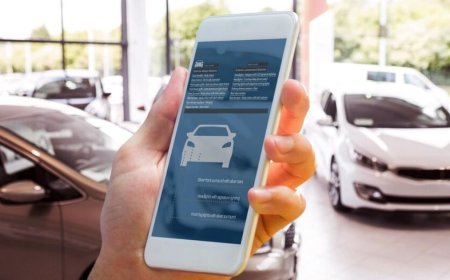How to take the bus in Memphis
How to Take the Bus in Memphis Taking the bus in Memphis is more than just a way to get from point A to point B—it’s a vital link in the city’s transportation ecosystem. Whether you’re a new resident, a student, a tourist exploring the Mississippi Riverfront, or a long-time local looking to reduce commuting costs, understanding how to navigate Memphis’s public transit system can save time, money,
How to Take the Bus in Memphis
Taking the bus in Memphis is more than just a way to get from point A to point B—it’s a vital link in the city’s transportation ecosystem. Whether you’re a new resident, a student, a tourist exploring the Mississippi Riverfront, or a long-time local looking to reduce commuting costs, understanding how to navigate Memphis’s public transit system can save time, money, and stress. The Memphis Area Transit Authority (MATA) operates an extensive network of bus routes that connect neighborhoods, employment centers, educational institutions, cultural landmarks, and shopping districts across Shelby County. While many assume public transit in mid-sized American cities is underdeveloped or unreliable, Memphis’s bus system has evolved significantly in recent years with improved scheduling, real-time tracking, and expanded service coverage. This guide provides a comprehensive, step-by-step walkthrough for using the bus in Memphis effectively, whether you’re riding for the first time or looking to optimize your daily commute.
Step-by-Step Guide
Using the bus in Memphis is straightforward once you understand the basic workflow. Below is a detailed, sequential guide to help you board, ride, and exit a MATA bus with confidence.
1. Plan Your Route Before You Leave
Before heading out, determine your origin and destination. Memphis has over 30 fixed bus routes, each serving specific corridors. The most efficient way to plan is by using MATA’s official trip planner. Visit mata.org and click on “Trip Planner.” Enter your starting address and destination, select your desired departure or arrival time, and the tool will generate the optimal route, including transfer points, walking distances, and estimated travel times. Always check for service alerts—route changes, detours, or holiday schedules can affect your trip.
Alternatively, you can use third-party apps like Google Maps or Transit App, which integrate MATA’s real-time data. These tools are especially helpful for tourists unfamiliar with local geography. However, always cross-reference with MATA’s official website to ensure accuracy, as third-party platforms may occasionally lag in updates.
2. Identify Your Nearest Bus Stop
Once you know your route, locate the nearest bus stop. MATA bus stops are marked with white poles bearing a blue and white MATA logo and route numbers. Stops are typically located at intersections or near major landmarks. Many stops also have shelters with seating, route maps, and schedules posted. If you’re unsure, use the MATA website’s “Bus Stop Locator” tool or search “MATA bus stops near me” on your smartphone’s map app.
Important: Not all stops serve every route. Double-check that the stop you’re waiting at is served by the bus number listed in your trip plan. For example, if you’re heading downtown from the University of Memphis, you might need to catch the Route 10 or Route 11—both serve the campus but terminate at different downtown points.
3. Know Your Schedule and Timing
MATA buses operate on fixed schedules, which vary by route and day of the week. Most routes run from approximately 5:30 a.m. to 9:30 p.m. Monday through Saturday. Sunday service is more limited, with many routes starting later and running less frequently. You can download printable PDF schedules from the MATA website or view them at the stop.
On weekdays, buses typically arrive every 15 to 30 minutes during peak hours (7–9 a.m. and 4–6 p.m.). Off-peak and weekend frequencies may extend to 60 minutes. Always arrive at your stop at least 5–10 minutes before the scheduled time. Delays can occur due to traffic, weather, or construction, so planning ahead helps avoid missed connections.
4. Prepare Your Fare
MATA accepts several forms of payment. The standard one-way fare is $1.75. Children under 5 ride free with a paying adult. Students, seniors (65+), and individuals with qualifying disabilities are eligible for discounted fares at $0.85 per ride. You can pay using exact change in cash, a MATA Smart Card, or a mobile ticket via the MATA Mobile App.
Cash payments require exact change—drivers do not carry change. If you plan to ride multiple times in a day, consider purchasing a Day Pass for $4.50, which allows unlimited rides within 24 hours. Monthly passes are also available for $50 and can be purchased online or at MATA’s Customer Service Center located at 120 S. Main Street.
Smart Cards are reloadable plastic cards that offer convenience and faster boarding. You can buy one for $2 at the Customer Service Center or select retail partners. Load value onto the card online, by phone, or in person. Tap the card on the reader when boarding—no need to fumble for coins or paper tickets.
5. Board the Bus
When your bus arrives, wait until it comes to a complete stop. Approach the front door—MATA buses have two doors: the front for boarding and the rear for exiting. Raise your hand or make eye contact with the driver to signal you want to board. Once the door opens, step on and tap your Smart Card or insert exact change into the farebox. The farebox will display your remaining balance or issue a paper transfer if you paid in cash.
Always move toward the back of the bus after boarding to allow others to enter. If you’re carrying a stroller, backpack, or large bag, be mindful of other passengers’ space. Buses are equipped with priority seating near the front for seniors and riders with disabilities. Please yield these seats if needed.
6. Ride Safely and Stay Aware
While riding, hold onto handrails, especially during stops and turns. Buses in Memphis may encounter uneven roads or heavy traffic, particularly on highways like I-240 or I-40. Avoid blocking the aisle or standing too close to the doors. If you’re using headphones, keep the volume low so you can hear announcements.
MATA buses have automated stop announcements that call out each destination. However, not all stops are announced if the system is temporarily offline. Pay attention to the digital display above the driver’s head, which shows the next stop. You can also ask the driver to notify you when you reach your destination—most are happy to help, especially with first-time riders.
7. Request Your Stop
To exit, pull the yellow cord above the window or press the “Stop Request” button near the doors at least one block before your destination. The driver will announce your stop and slow the bus. Do not stand near the doors while the bus is moving. Wait until the bus has fully stopped before moving toward the rear exit.
Always exit through the rear door unless you have a mobility device or need assistance. This keeps the boarding process efficient and prevents congestion.
8. Transfer Between Routes
If your journey requires a transfer, ask the driver for a paper transfer when you pay your fare. Transfers are valid for 90 minutes and allow you to board another MATA bus without paying again. Transfers are not available if you use a Smart Card or mobile ticket—the system automatically recognizes your ride history and grants free transfers within the time window.
Plan transfers carefully. Some hubs, like the Downtown Transfer Center at 120 S. Main Street, serve as central connection points for multiple routes. Others may require walking between stops. Use the trip planner to identify transfer points with minimal walking distance and wait times.
9. After Your Ride
Once you’ve reached your destination, exit the bus and check your surroundings. Be aware of traffic, especially when crossing streets. If you’re carrying belongings, ensure you have everything before leaving the bus. Lost items can be reported through MATA’s website, though recovery is not guaranteed.
For return trips, repeat the process. Save your trip details or screenshot your route in case you need to reference it later. Many riders find it helpful to note the bus number and direction (e.g., “Route 10 Westbound”) to avoid boarding in the wrong direction.
Best Practices
Mastering the bus system in Memphis isn’t just about knowing the steps—it’s about adopting habits that make your experience smoother, safer, and more reliable. These best practices are based on feedback from regular riders and MATA operational data.
1. Always Carry a Backup Payment Method
Even if you use a Smart Card, keep a few dollars in exact change as a backup. Card readers can malfunction, batteries can die, or you may forget your card. Having cash ensures you won’t be stranded.
2. Download the MATA Mobile App
The official MATA Mobile App (available on iOS and Android) provides real-time bus tracking, route maps, fare information, and service alerts. It’s the most reliable way to know exactly when your bus is arriving. The app also lets you purchase and store digital tickets—no need to carry physical cards or cash.
3. Avoid Rush Hour If Possible
While peak hours are unavoidable for many commuters, if your schedule allows, consider traveling outside 7:30–9:30 a.m. and 4:30–6:30 p.m. Buses are more crowded, and delays are more frequent during these times due to traffic congestion on major arteries like Elvis Presley Boulevard and Union Avenue.
4. Learn Key Transfer Hubs
Familiarize yourself with major transfer centers:
- Downtown Transfer Center – 120 S. Main Street: Connects 15+ routes, including access to FedExForum, Beale Street, and the National Civil Rights Museum.
- University of Memphis – Route 10, 11, 12, and 15 converge here, making it ideal for students and faculty.
- Memphis International Airport – Route 25 provides direct service to downtown and Midtown.
- East Memphis Shopping Center – Served by Route 18 and 20, connecting to major retail and medical centers.
Knowing these hubs helps you plan efficient transfers and reduces walking distance.
5. Stay Informed About Service Changes
MATA periodically updates routes to improve efficiency. Check their website or social media channels (Facebook and Twitter) monthly for schedule changes, detours, or new routes. For example, in 2023, MATA launched Route 95 to improve access to the South Memphis industrial corridor. Riders who didn’t check updates missed the change and were forced to walk extra blocks.
6. Be Respectful and Patient
Public transit is a shared space. Allow others to exit before boarding. Avoid loud conversations or music. If you’re unsure about something, ask politely—drivers and fellow riders are often willing to help. A little courtesy goes a long way in building a positive transit culture.
7. Use the Bus for More Than Commuting
Many riders overlook that the bus can be used for leisure. Route 15 connects to the Memphis Zoo and the Dixon Gallery and Gardens. Route 12 goes to the Memphis Botanic Garden and the historic Overton Park. Use your ride as a way to explore the city’s cultural offerings without the cost of parking or gas.
8. Report Issues Promptly
If you experience a broken stop light, a missed bus, or unclean vehicle, report it through MATA’s website. Your feedback helps improve service. Don’t assume someone else has already reported it—your input matters.
Tools and Resources
Successful bus riding in Memphis relies heavily on leveraging the right tools. Below is a curated list of official and third-party resources to enhance your experience.
1. MATA Official Website: www.mata.org
The primary hub for all transit information. Here you’ll find:
- Interactive route maps
- Real-time bus tracking
- PDF schedules for every route
- Fare information and pass purchasing
- Service alerts and construction updates
- Accessibility information
The site is mobile-friendly and updated daily. Bookmark it.
2. MATA Mobile App
Available on iOS and Android, the app offers:
- Live bus locations with arrival estimates
- Mobile ticketing (digital passes and single rides)
- Route search and trip planning
- Push notifications for service disruptions
- Stop alerts (you can set notifications for specific stops)
Download it before your first ride. It’s free and requires no account to use basic features.
3. Google Maps
Google Maps integrates MATA’s real-time data and provides turn-by-turn directions with walking, biking, and transit options. It’s especially useful for visitors unfamiliar with Memphis neighborhoods. Simply type “get directions” and select the transit icon. You’ll see estimated arrival times, walking distances to stops, and transfer instructions.
4. Transit App
A popular third-party app among urban transit users. Transit offers real-time tracking, trip planning, and alerts across 100+ U.S. cities, including Memphis. Its interface is clean and intuitive, with features like “next bus” countdowns and route previews. It also allows you to save favorite stops and routes.
5. MATA Customer Service Center
Located at 120 S. Main Street, Memphis, TN 38103, this center offers in-person assistance with:
- Purchasing and reloading Smart Cards
- Buying monthly passes
- Reporting lost items
- Getting printed schedules and maps
Hours are Monday–Friday, 8 a.m.–5 p.m. It’s closed on weekends and major holidays.
6. Printed Maps and Schedules
Physical copies of route maps and schedules are available at public libraries, community centers, and select retail locations throughout the city. Ask at your local branch of the Memphis Public Library—they often have stacks of MATA materials. These are invaluable if you don’t have smartphone access or prefer analog tools.
7. MATA Social Media Channels
Follow MATA on Facebook (@MemphisAreaTransitAuthority) and Twitter (@MATAtransit) for real-time updates on delays, detours, weather-related closures, and special events affecting service. These platforms are frequently updated during holidays, festivals, or road construction.
8. Memphis Transit Riders Association (MTRA)
A community-driven group that advocates for improved transit access and reliability. While not an official MATA entity, MTRA hosts monthly forums, shares rider tips, and publishes guides for new riders. Visit their website or join their Facebook group for grassroots insights and firsthand experiences.
Real Examples
Understanding how to take the bus in Memphis becomes clearer when you see it in action. Below are three realistic scenarios showing how different riders navigate the system.
Example 1: The Student Commuting to the University of Memphis
Samantha, a sophomore at the University of Memphis, lives in the Raleigh neighborhood, about 4 miles from campus. She doesn’t own a car and relies on the bus.
Her routine:
- Leaves home at 7:15 a.m. and walks 8 minutes to the stop at Raleigh and Poplar.
- Waits for Route 11 (University Express), which arrives at 7:32 a.m.
- Boards using her MATA Smart Card (loaded with a weekly pass).
- Rides for 22 minutes, passing through Midtown and downtown.
- Exits at the University of Memphis stop near the Student Union.
- After class, she takes Route 10 back, arriving home at 5:45 p.m.
She uses the MATA app to track her bus in real time. On rainy days, she checks for delays. Her monthly cost is $50—far less than parking fees or gas.
Example 2: The Tourist Visiting Beale Street
James and his wife are visiting Memphis from Chicago. They want to experience Beale Street but don’t want to rent a car.
They stay at a hotel near the Memphis International Airport. Their plan:
- Take Route 25 from the airport to downtown (35-minute ride, $1.75 each).
- Exit at the Downtown Transfer Center.
- Walk 5 minutes to Beale Street (signs are clear).
- After dinner, they take Route 15 from Beale Street to the airport for their 10 p.m. flight.
- They purchase single-ride tickets with cash at the airport stop.
They used Google Maps to plan the trip and printed a map at their hotel. They found the bus clean, safe, and easy to follow. They didn’t need to pay for parking or worry about traffic.
Example 3: The Senior Citizen Visiting the Medical Center
Martha, 72, has a doctor’s appointment at the Methodist Le Bonheur Healthcare campus on Poplar Avenue. She uses her senior discount fare.
Her route:
- Leaves her home in South Memphis at 1:15 p.m. and walks to the stop on South Parkway.
- Boards Route 18, which runs every 30 minutes.
- Transfers at the East Memphis Shopping Center to Route 17.
- Exits at the Medical Center stop at 2:10 p.m.
- After her appointment, she takes Route 17 back to East Memphis, then Route 18 home.
She uses a printed schedule because she doesn’t use a smartphone. She carries her ID for fare verification. The driver helped her confirm her transfer point. She says the system has made her medical visits much more manageable.
FAQs
Can I bring a bicycle on the bus?
Yes. MATA buses are equipped with front-mounted bike racks that hold up to two bicycles. Load your bike before boarding. The driver will assist you if needed. Bikes are carried at no extra charge. Foldable bikes can be brought onboard as luggage.
Are the buses wheelchair accessible?
All MATA buses are ADA-compliant and feature ramps, priority seating, and securement areas for wheelchairs and mobility devices. Drivers are trained to assist with boarding and securing devices. Call ahead if you need help planning your route with accessibility in mind.
What happens if I miss my bus?
If you miss your bus, check the MATA app or website for the next arrival time. Most routes run every 15–30 minutes during the day. If you have a transfer, you can use it on the next bus within 90 minutes. If you’re stranded and it’s late, consider using a rideshare app or contacting a friend.
Can I use my MATA pass on other transit systems?
No. MATA passes are only valid on MATA-operated buses within Shelby County. They cannot be used on Greyhound, Amtrak, or regional systems like the Nashville MTA or Jackson Transit.
Is it safe to ride the bus at night?
MATA buses are generally safe, especially on main routes and during daylight hours. Night service is limited, with most routes ending by 9:30 p.m. If you must travel after dark, stick to well-lit stops, sit near the front, and avoid distractions like headphones. Always trust your instincts—if something feels off, notify the driver.
Do buses run on holidays?
Service is reduced on major holidays such as Thanksgiving, Christmas Day, and New Year’s Day. Some routes may not run at all. Check the MATA website at least two days before a holiday for the official holiday schedule.
Can I bring food or drinks on the bus?
Non-alcoholic beverages in sealed containers are permitted. Food is discouraged, especially strong-smelling items, to maintain comfort for all riders. Please dispose of trash properly.
What if I lose something on the bus?
Report lost items immediately through MATA’s website or by visiting the Customer Service Center. Provide details such as the route number, time of day, and description of the item. While recovery isn’t guaranteed, many items are returned if reported within 24 hours.
Is there free Wi-Fi on MATA buses?
No. MATA buses do not currently offer onboard Wi-Fi. However, many stops near libraries, cafes, and public buildings have free public Wi-Fi access.
Can I use a debit or credit card to pay on the bus?
Not directly. Cash and Smart Cards are the only accepted forms of payment at the farebox. However, you can load value onto your Smart Card using a debit or credit card online or at the Customer Service Center.
Conclusion
Taking the bus in Memphis is not just a practical alternative to driving—it’s a gateway to experiencing the city’s rhythm, culture, and community. With a well-planned route, the right tools, and a few simple habits, anyone can navigate MATA’s network with ease. Whether you’re a student, a worker, a senior, or a visitor, the bus connects you to the heart of Memphis: its music, its history, its people, and its promise.
The system continues to evolve, with new routes, better technology, and increased accessibility on the horizon. By learning how to ride responsibly and encouraging others to do the same, you become part of a broader movement toward sustainable, equitable urban mobility.
Start small: plan one trip this week. Use the app. Try a Smart Card. Ride to a place you’ve never been. You might discover that the bus doesn’t just take you where you need to go—it opens up a whole new way of seeing Memphis.


















